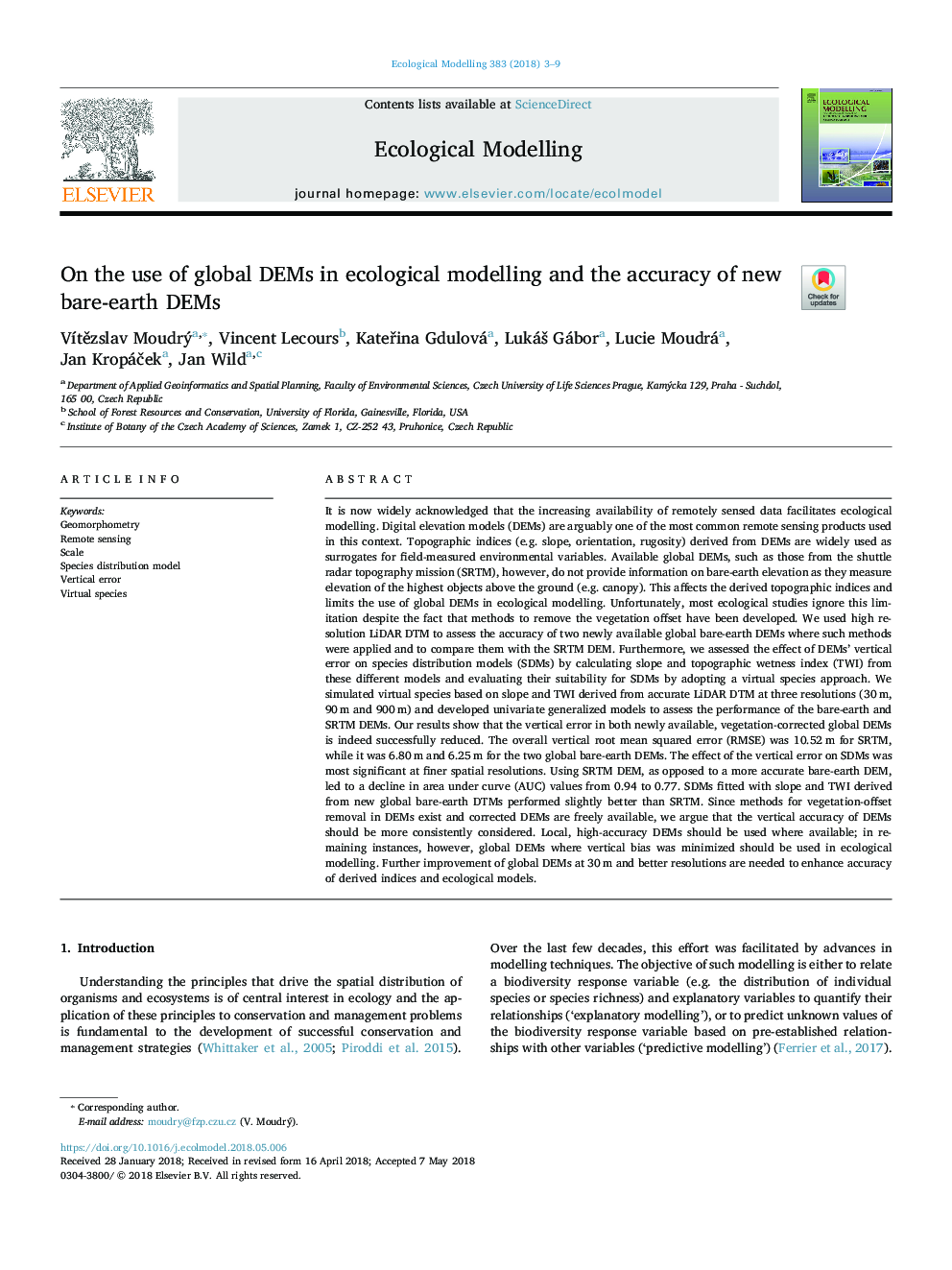| کد مقاله | کد نشریه | سال انتشار | مقاله انگلیسی | نسخه تمام متن |
|---|---|---|---|---|
| 8845987 | 1617364 | 2018 | 7 صفحه PDF | دانلود رایگان |
عنوان انگلیسی مقاله ISI
On the use of global DEMs in ecological modelling and the accuracy of new bare-earth DEMs
دانلود مقاله + سفارش ترجمه
دانلود مقاله ISI انگلیسی
رایگان برای ایرانیان
کلمات کلیدی
موضوعات مرتبط
علوم زیستی و بیوفناوری
علوم کشاورزی و بیولوژیک
بوم شناسی، تکامل، رفتار و سامانه شناسی
پیش نمایش صفحه اول مقاله

چکیده انگلیسی
It is now widely acknowledged that the increasing availability of remotely sensed data facilitates ecological modelling. Digital elevation models (DEMs) are arguably one of the most common remote sensing products used in this context. Topographic indices (e.g. slope, orientation, rugosity) derived from DEMs are widely used as surrogates for field-measured environmental variables. Available global DEMs, such as those from the shuttle radar topography mission (SRTM), however, do not provide information on bare-earth elevation as they measure elevation of the highest objects above the ground (e.g. canopy). This affects the derived topographic indices and limits the use of global DEMs in ecological modelling. Unfortunately, most ecological studies ignore this limitation despite the fact that methods to remove the vegetation offset have been developed. We used high resolution LiDAR DTM to assess the accuracy of two newly available global bare-earth DEMs where such methods were applied and to compare them with the SRTM DEM. Furthermore, we assessed the effect of DEMs' vertical error on species distribution models (SDMs) by calculating slope and topographic wetness index (TWI) from these different models and evaluating their suitability for SDMs by adopting a virtual species approach. We simulated virtual species based on slope and TWI derived from accurate LiDAR DTM at three resolutions (30â¯m, 90â¯m and 900â¯m) and developed univariate generalized models to assess the performance of the bare-earth and SRTM DEMs. Our results show that the vertical error in both newly available, vegetation-corrected global DEMs is indeed successfully reduced. The overall vertical root mean squared error (RMSE) was 10.52â¯m for SRTM, while it was 6.80â¯m and 6.25â¯m for the two global bare-earth DEMs. The effect of the vertical error on SDMs was most significant at finer spatial resolutions. Using SRTM DEM, as opposed to a more accurate bare-earth DEM, led to a decline in area under curve (AUC) values from 0.94 to 0.77. SDMs fitted with slope and TWI derived from new global bare-earth DTMs performed slightly better than SRTM. Since methods for vegetation-offset removal in DEMs exist and corrected DEMs are freely available, we argue that the vertical accuracy of DEMs should be more consistently considered. Local, high-accuracy DEMs should be used where available; in remaining instances, however, global DEMs where vertical bias was minimized should be used in ecological modelling. Further improvement of global DEMs at 30â¯m and better resolutions are needed to enhance accuracy of derived indices and ecological models.
ناشر
Database: Elsevier - ScienceDirect (ساینس دایرکت)
Journal: Ecological Modelling - Volume 383, 10 September 2018, Pages 3-9
Journal: Ecological Modelling - Volume 383, 10 September 2018, Pages 3-9
نویسندگان
VÃtÄzslav Moudrý, Vincent Lecours, KateÅina Gdulová, LukáÅ¡ Gábor, Lucie Moudrá, Jan KropáÄek, Jan Wild,